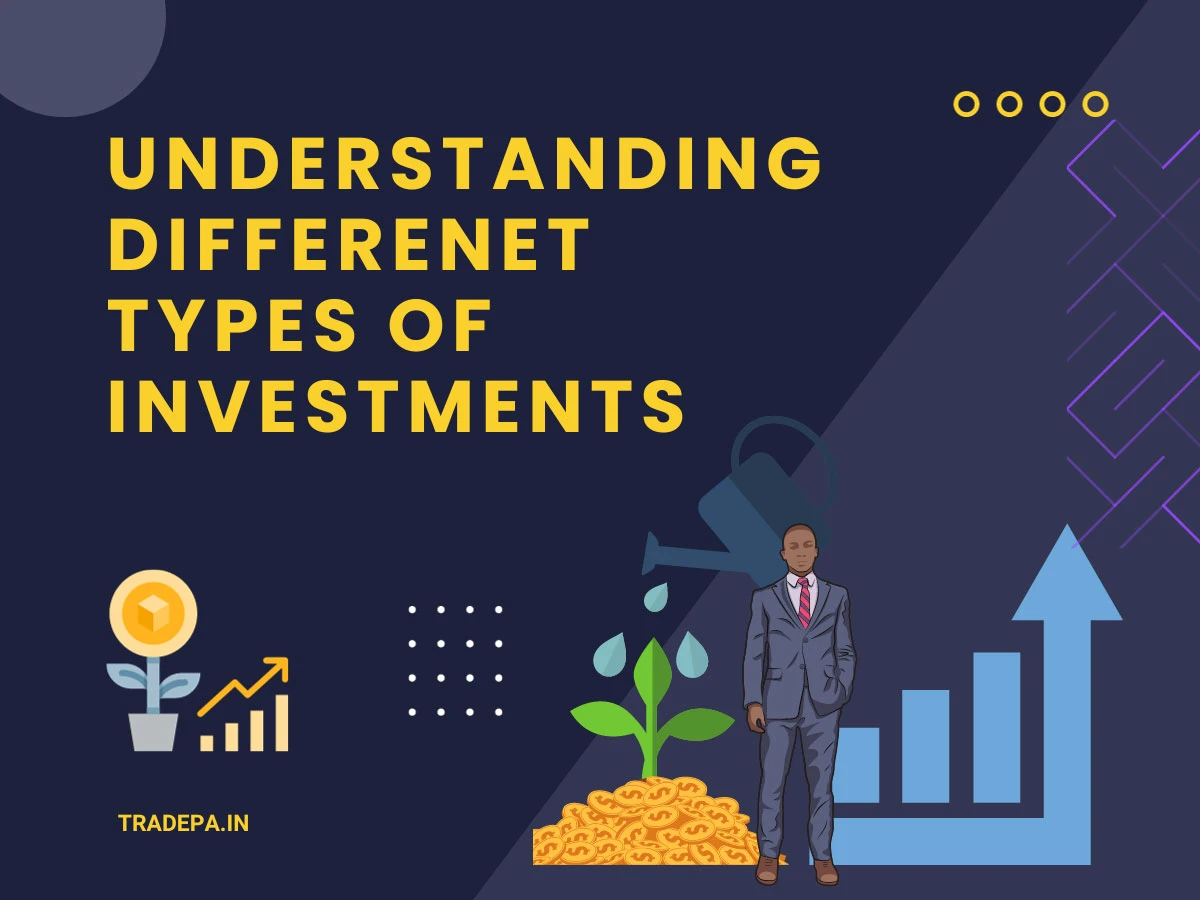Understanding Different Types of Investments

In the dynamic world of finance, navigating the realm of investments can be both exhilarating and daunting. It's a terrain where decisions today can shape financial destinies tomorrow. To embark on this journey confidently, one must first grasp the diverse array of available investment options. Every investment avenue presents distinctive opportunities and risks, from stocks, forex, and bonds to real estate, commodities, and beyond. Each has its potential for returns and inherent uncertainties. Whether you're a seasoned investor or just a beginner, this guide promises to be a valuable compass in your pursuit of financial success. So, let's dive in and decode the world of investments together!
The Importance of Diversification
Diversification is akin to the foundation of a sturdy financial portfolio. It involves spreading investments across various asset classes, reducing the impact of a downturn in any single sector. This strategy mitigates risk and maximizes the potential for long-term gains.
Balancing Risk and Reward
Diversification strikes a delicate balance between risk and reward. By allocating resources across different types of investments, investors can manage the level of risk they're comfortable with while still aiming for lucrative returns. It's a strategy that harmonizes financial growth with prudent risk management.
Equity Investments
Stocks represent ownership in a company, making them a cornerstone of many investment portfolios. Understanding the distinction between ordinary and preferred stocks is crucial. Common stocks offer voting rights and dividends, while preferred stocks provide a fixed dividend but lack voting privileges.
Growth Stocks vs. Value Stocks
Within the realm of stocks, investors encounter growth and value stocks. Growth stocks, as the name suggests, are shares of companies poised for substantial expansion. Conversely, value stocks are considered undervalued and may present opportunities for long-term appreciation.
Real Estate

Investing in real estate presents a tangible and potentially profitable opportunity for investment. It encompasses both residential and commercial properties. The two decisions depend on risk tolerance, market conditions, and long-term goals.
Residential vs. Commercial Real Estate
Residential real estate involves properties meant for habitation, such as houses and apartments. On the other hand, commercial real estate encompasses spaces used for businesses, like office buildings and retail centers. Each possesses its unique dynamics and potential for returns.
Bonds - Fixed Income Investments
Bonds are essentially debt securities issued by governments or corporations. They are renowned for their stability and reliable returns. Government bonds are backed by a government's full faith and credit, while corporate bonds carry varying degrees of risk.
Government Bonds vs. Corporate Bonds
Government bonds are considered low-risk, making them an attractive option for conservative investors. They offer steady, albeit modest, returns. Conversely, corporate bonds may yield higher returns but come with an increased level of risk, as they are contingent on the financial health of the issuing company.
High-Yield Bonds vs. Investment-Grade Bonds
Within the realm of bonds, investors encounter high-yield and investment-grade options. High-yield bonds, usually referred to as junk bonds, offer higher returns but are associated with greater risk due to the lower credit rating of the issuer. Investment-grade bonds, conversely, come from financially stable entities and offer more modest yet reliable returns.
Alternative Investments

While stocks and bonds are staples of investment portfolios, alternative investments offer a unique opportunity for diversification. These include commodities, and hedge funds, each with its characteristics and potential for returns.
- Commodities encompass many assets, from precious metals like silver and gold to agricultural products like wheat and corn. Investing in commodities can act as a defense against inflation's effects and provide a means of diversification beyond traditional securities.
- Hedge funds are investment vehicles employing diverse strategies to generate returns for their investors. These strategies can include short and long positions, leverage, and derivatives trading. They are typically managed by experienced professionals and are known for their active management style.
Mutual Funds and Exchange-Traded Funds (ETFs)
Mutual funds pool capital from numerous investors to create a diversified portfolio that typically includes stocks, bonds, or various other securities. Professional fund managers oversee and manage these pooled investments, providing a convenient way for individuals to access a diversified investment strategy.
Actively Managed vs. Passively Managed Funds
Mutual funds come in two primary management styles: actively and passively (index) funds. Actively managed funds involve a fund manager's ongoing selection of investments, while index funds strive to mirror the performance of a particular market index. Understanding the nuances of these approaches is vital for investors.
ETFs
Exchange-Traded Funds (ETFs) combine elements of both mutual funds and stocks. They trade on stock exchanges just like common stocks but represent a basket of assets like mutual funds. ETFs offer liquidity diversification and often have lower expense ratios than traditional mutual funds.
Risk Tolerance and Investment Strategies
Understanding one's risk tolerance is a fundamental step in crafting an investment strategy. It involves evaluating one's comfort level with the potential for financial loss. This self-awareness informs the selection of investments that match individual risk tolerance and financial goals.
Tailoring Investment Strategies to Your Profile
With knowledge of risk tolerance, investors can develop a personalized investment strategy. This strategy should encompass asset allocation, diversification, and periodic portfolio rebalancing. It acts as the roadmap for attaining financial goals while balancing an acceptable level of risk.
Conclusion
Armed with a comprehensive understanding of various investment avenues, individuals are poised to chart their course toward financial success. Implementing a diversified and well-informed investment strategy lays the groundwork for achieving long-term financial goals.
Investing is not merely a financial endeavor but a pathway to attaining financial freedom and unlocking a world of possibilities. With sound knowledge and prudent decision-making, individuals can navigate the intricate landscape of investments and pave the way to a prosperous future.








